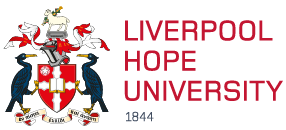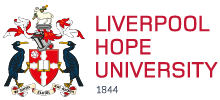Dr Stephen Kelly, Associate Professor in Modern History, discusses Margaret Thatcher, British State collusion and the murder of Pat Finucane.
The decision on behalf of the Council of Europe to re-open a case concerning the murder of prominent Belfast solicitor Pat Finucane in 1989 has resurrected a fiercely contested debate surrounding the extent of collusion between the British state and Loyalist paramilitaries during Margaret Thatcher’s premiership, writes Stephen Kelly.
On 12 March 2021, at a meeting of the Council of Europe, attended by government officials of its 47 member states, Europe’s leading human rights body announced its decision to re-open Finuance’s case. This move ensures that the body will monitor how the United Kingdom addresses ‘the fact there has never been an adequate investigation into the 1989 shooting’.[1]
This decision on behalf of the Council of Europe comes less than four months after the British government’s announcement, on 30 November 2020, not to order a public enquiry into Finucane’s murder at the hands of the Ulster Defence Association (UDA)/Ulster Freedom Fighters (UFF) in February 1989.
Although Brandon Lewis, secretary of state for Northern Ireland, has previously acknowledged state collusion and apologised to the Finucane family, speaking in the House of Commons in November of last year, he stipulated that there would be no inquiry into Finucane’s murder pending a new review conducted by the Police Service of Northern Ireland (PSNI). This decision was reached despite a Supreme Court ruling that the British government’s failure to properly investigate Finucane’s murder was in breach of the European Convention on Human Rights.[2]
In my new book, Margaret Thatcher, the Conservative Party and Northern Ireland, 1975-1990, I reveal the true extend of collusion between elements of the British state and Loyalist paramilitaries throughout Thatcher’s over eleven years as UK prime minister.[3]
On 12 February 1989, Loyalist gunmen murdered Finucane in cold blood, as he sat down for dinner with his wife and children. A prominent criminal defence and civil rights Belfast solicitor, Finucane’s murder immediately sparked off accusations of collusion between elements of the British state and Loyalist paramilitaries, including baseless claims in later years that Thatcher, herself, ‘ordered’ the murder of Finucane.[4]
While Thatcher played no part in Finucane’s murder, the available evidence provides indisputable proof that elements of the British state ‘conspired to kill’ Finucane, to quote Darragh MacIntyre.[5]
Brian Nelson, a former Loyalist paramilitary, who was recruited as an agent (code name ‘Agent 6137’) by the British Army’s most secret intelligence wing – euphemistically known as the Force Research Unit (FRU) – put forward Finucane’s name as a credible target for his killers, providing them with a photograph and home address of their victim.[6]
At this time, Nelson had risen to become the head of intelligence for the UFF, the “killer” wing of the Ulster Defence Association (UDA).[7] Operating at this rank, he used his position to identify targets, including Finucane, for the UDA/UFF dead squads.[8]
Finucane was targeted for assassination because in the months leading to his murder he had been investigating accusations of British state collusion with Loyalist paramilitaries in the campaign against the Provisional Irish Republican Army (PIRA). Over the preceding years, he had also represented many Irish Republicans, including Bobby Sands during the second Irish Republican hunger strike of 1981. Two of Finucane’s brothers, Dermot and Seamus, were allegedly also senior members of the PIRA.[9]
Misinformation was also spread at the time by some within the British Army that Finucane, himself, was a member of the PIRA.[10]
In fact, before Finucane’s murder, the Irish government had raised concerns on receiving information that Royal Ulster Constabulary (RUC) members based at Castlereagh Police Station were ‘encouraging Protestant paramilitaries to attack Irish Republican lawyers’, in which Finucane’s name had been specifically mentioned.[11]
Finucane’s murder was only one of several incidents during Thatcher’s premiership in which the British state was involved in widespread collusion between Loyalist paramilitary ‘death squads’ and agencies of the British state, such as the FRU, the RUC special branch and the part-time Ulster Defence Regiment (UDR), a ‘local’ infantry regiment of the British Army, established in 1970.[12]
According to several sources during this period it was common practice for the British state to share top-secret intelligence material, evidence, weapons and personnel with Loyalist paramilitaries, including members of the UDA and Ulster Volunteer Force (UVF) (during Thatcher’s premiership the UDA and UVF were believed to have easily infiltrated the UDR).[13]
Raymond White, a former head of the RUC special branch, subsequently admitted that in 1986 he raised the subject of collusion with Thatcher, seeking legal clarification for the handling of British undercover agents who had penetrated paramilitary groups. The message that White received after his meeting with Thatcher regarding the use of undercover agents was to “carry on, but don’t get caught”.[14]
Indeed, in a 2015 interview Michael Mates, a former Conservative Party MP and a minister at the Northern Ireland Office from 1992 to 1993, conceded that the scale of the collusion between the British state and Loyalist paramilitaries during the 1980s was much greater than he had believed it to be at the time.[15]
The Stevens Inquiries, initially established in September 1989, were three official British government inquiries, led by Sir John Stevens, concerning alleged collusion in Northern Ireland between Loyalist paramilitaries and the British state security forces. In the findings of his first report, published in 1990, Stevens found that collusion was ‘neither wide-spread nor institutionalised’.[16]
However, the third and final of Steven’s report published in 2003 found that there ‘had been collusion in the killing of Finucane between members of the security forces, especially the FRU and Loyalists’.[17]
In 2012, the British government, under the chairmanship of Desmond de Silva, commenced an official review into Finucane’s murder. De Silva’s findings caused a political sensation. The De Silva Report claimed that employees of the British state “actively facilitated” Finucane’s murder, through a dark web of collusion between elements of the British security forces and Loyalist paramilitaries. The De Silva Report also claimed that successive British governments knew about such collusion in relation to Finucane’s murder but ‘did nothing about it’.[18]
In January 2015, British prime minister David Cameron, publicly placed on the record that ‘employees of the state actively furthered and facilitated Patrick Finucane’s murder…’. Cameron, however, refused to order a public inquiry into his murder. Finuance’s widow, Geraldine, called the De Silva Report a “Whitewash” and accused the British government of “engineering a suppression of the truth”.[19]
Fast forward to November 2020, and yet again, the Finucane family were left devastated by the British government’s decision not to order a public enquiry into Finucane’s murder. A decision that Amnesty International UK described as ‘shameful’.[20]
The recent decision on behalf of the Council of Europe to re-open Finucane’s case provides some hope and optimism for the Finucane family that justice may be rightly served.
Finucane’s assassination at the hands of his Loyalist killers, together with similar controversial murders by Loyalist paramilitaries during the 1980s, continues to cast a dark shadow over Thatcher’s legacy on Northern Ireland. Indeed, Thatcher’s association with Northern Ireland during her premiership is further complicated by accusations – which she strenuously denied – that she knowingly supported the British security forces’ ‘shoot-to-kill’ policy, in which many Republican paramilitaries were found in ‘compromising situations’ and were duly ‘executed’.[21]
Frustratingly one will never know the true extent of Thatcher’s involvement with the above controversial policies. Several relevant British government state papers remain closed, some indefinitely, while many of those directly involved either refuse to speak about these issues or have passed away.
The contents of this article are sourced from Stephen Kelly’s new book, Margaret Thatcher, the Conservative Party and the Northern Ireland conflict, 1975-1990 (Bloomsbury, London, 2021)
Download the original article for the complete detailed list of references - Expert comment Dr Stephen Kelly



